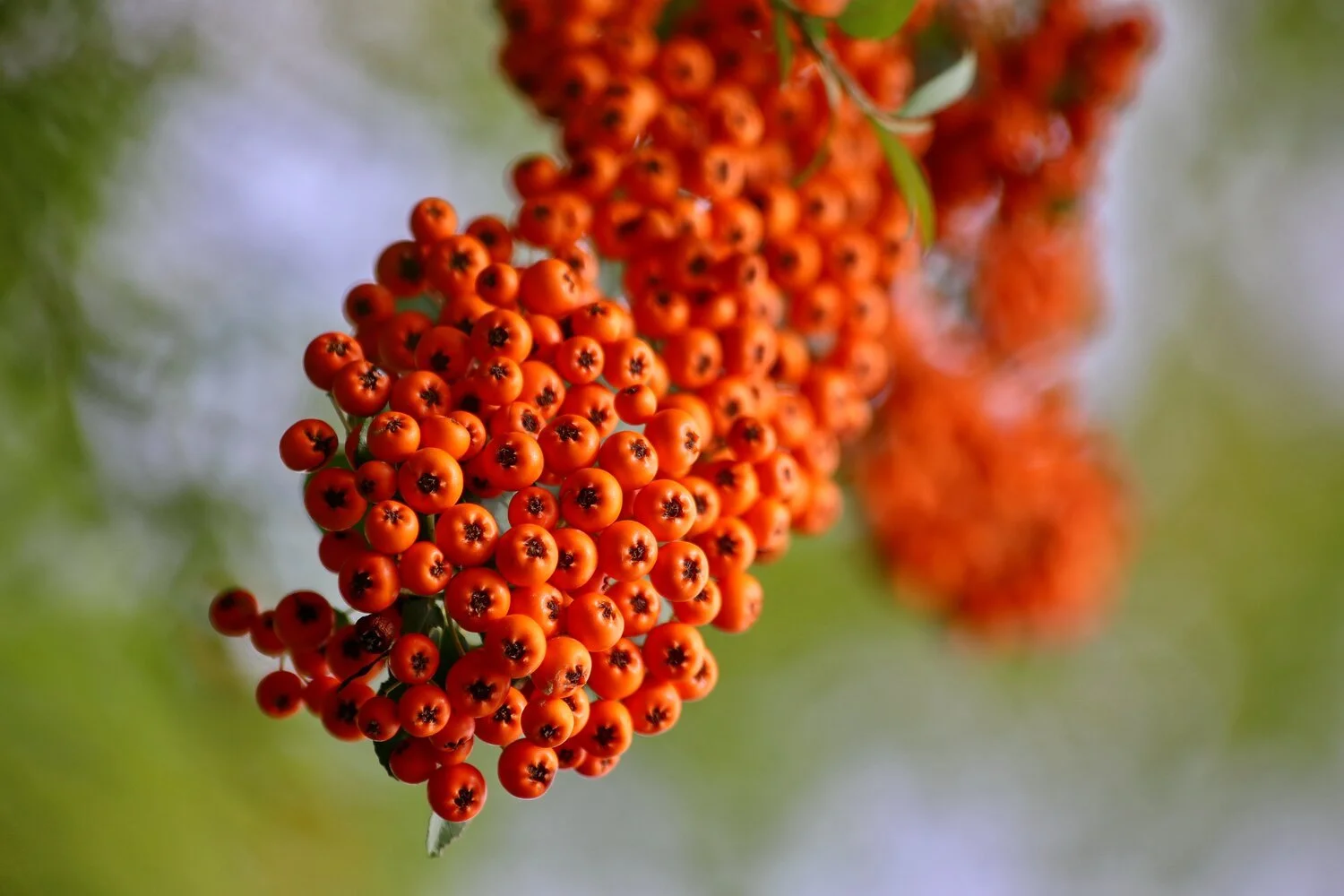The Folklore and Mythology of the Rowan Tree
By CAROLINE GLADSTONEThe rowan, or mountain ash, sorbus aucuparia, is my favourite tree.
It isn’t regal in stature or age, like an oak, nor does it have the spreading canopy of a beech. But there is something that really appeals to me about its tenacity and its ability to grow in the most inaccessible places.
In Britain, it grows at higher altitudes than any other tree. This does of course mean that it is often gnarly, but this is more than made up for by the froth of tiny white flowers that cover it in the spring, to be replaced by heavy bunches of gloriously red berries in the autumn.
Also known as quickbeam, wicken or witchwood, no tree has more mystical and folkloric association than the rowan.
The rowan is seen as the tree of protection, particularly against witches and enchantment. It is often found near stone circles or ancient burial sites, as it was believed by the Druids to protect the spirits of the dead. The Druids also used the bark and berries to dye their ceremonial robes for the lunar celebrations black. Sprigs of rowan were worn or carried as protection against evil spirits. They were thought to protect the wearer but were also used to protect livestock and produce. If milk was stirred with a piece of rowan, it wouldn’t curdle.
In the late 19th century, the archaeologist Rev Canon John Christopher donated several loops and crosses made of rowan to the Pitts Rivers Museum in Oxford. They were believed to have been made by an old man in Strathdon, Aberdeenshire. They were traditionally placed above all doorways and windows of a house on St Lammas Day, August 1st, by a person who was forbidden to speak to anyone he met, to ward off evil. In another version of the tale, the loops and crosses were put in place by a horseman who turned his horse three times before placing each loop. According to a historian at the Pitts Rivers Museum, the people of Strathspey in Scotland would make a loop of rowan on May Day and walk their flocks of sheep and lambs through it in the morning and again in the evening, to protect them against witches. From Scotland to Cornwall, similar equal-armed crosses bound with red thread were sewn into the lining of coats or carried in pockets.
A rowan growing next to a house was said to afford protection to the house and all its residents, making it a very desirable property. If a rowan seeds in the fork of another tree, like the one in the photo above, it is called a ‘flying rowan” which has especially strong powers of protection against witches and sorcery.
The protective power comes from the berries, as red was thought to be the best colour for fighting evil and witchcraft. An old rhyme confirms this:
“Rowan tree and red thread
Make the witches tine (lose) their speed”
Each berry also has a tiny five-pointed star or pentagram opposite its stalk and the pentagram is an ancient protective symbol.
In Scotland, in the Highlands particularly, there was a strong taboo against cutting down a rowan or even using any part of the tree apart from the berries. There were exceptions, though. A tool called a buaitean made of rowan was used for threshing grain for rituals and celebrations, but rowan should never be harvested with a knife.
Also called the traveller’s or wayfarer’s tree because it was thought to prevent travellers from getting lost.
But it doesn’t just stop in Britain. In Greek mythology, Hebe, the goddess of youth, gave out ambrosia, the nectar of the gods, from a magical chalice. When the demons took her chalice, the gods sent an eagle to recover the chalice. During the ensuing fight, the eagle shed blood and lost feathers and where each feather or drop of blood fell, a rowan tree sprung up. This is why the rowan leaves look like feathers and the berries are blood-red.
In Norse mythology, Thor was saved from a fast-flowing river in the Underworld when he clung onto the branches of a rowan. The myth says that this was the tree from which the first woman was made, the first man having been made from an ash.
In Neo-Druidism, the rowan is considered to be a portal tree, an opening between this world and another world, both an entry point and an exit, a threshold ‘offering you the chance of going somewhere and leaving somewhere’.
And then of course, there is the belief that a bountiful berry crop is the harbinger of a hard winter, although the specifics of this belief vary from place to place. In Newfoundland, it is the predictor of heavy snowfall, but in Sweden and Finland, the belief is that heavy snow and a heavy crop will not happen in the same year, so a hard winter with little snow.
It really is a mighty little tree, and how lucky for us that one grows just outside the house at Glen Dye!



